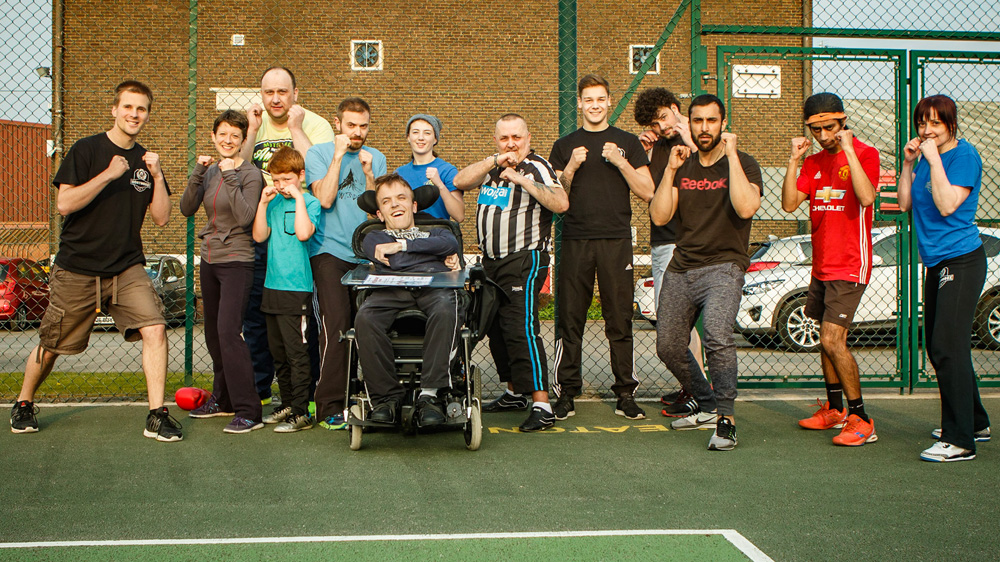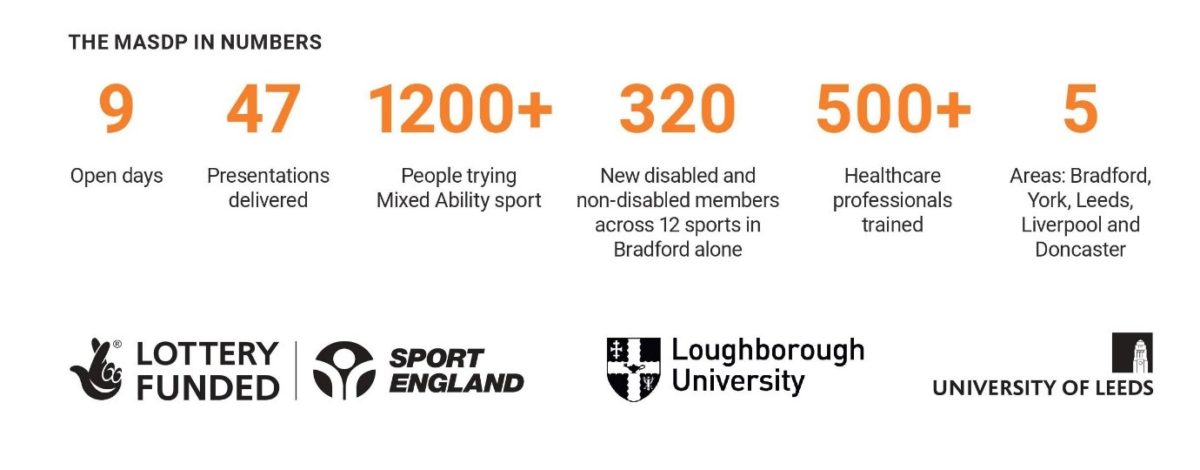Mixed Ability Sport: "can we make the rest of society more like this!?"
Written by Dr Jen Dyer

Evaluating the Mixed Ability Sports Development Programme (MASDP)
By Dr Jen Dyer (University of Leeds), Dr Rachel Sandford (Loughborough University) and Dr Angharad Beckett (University of Leeds)
The Mixed Ability Sport Development Programme (MASPD) aims to promote social inclusion through sport, education and advocacy. The Mixed Ability model is being developed and championed by the not-for-profit organisation, International Mixed Ability Sports (IMAS) who first developed the approach through the context of rugby. Mixed Ability sport encourages social inclusion by integrating players regardless of dis/ability into a mainstream sport setting and emphasises the importance of sustainable provision, self-determination, club membership and opportunities for social interaction.

Mixed Ability Rugby
The MASDP can be seen to contribute to a growing body of work on the use of sport/physical activity as vehicles for positive impact through, for example, cultural cohesion, gender equity, education and social inclusion. Moreover, it aligns with the Article 30 of the UN Convention on the Rights of Persons with Disabilities Article, which states that participation in mainstream sport should be a right for all individuals.
The Sport England-funded MASDP allowed IMAS to trial Mixed Ability in rowing, cricket, boxing, tennis, golf, exercise, movement and dance (EMD) and bowls. IMAS also attracted interest from swimming, cycling, wheelchair basketball and KinBall during the Programme. Activities were initially concentrated in the Bradford area but by the second year, IMAS had expanded the footprint to a regional level, including areas in South Yorkshire and the North West of England.

IMAS Sport Project: Key Facts
The MASDP was evaluated between Nov 2016 and Jan 2019. An ethnographic approach was taken resulting in a large amount of rich, qualitative data being collected through methods such as timelines, interviews and focus groups, as well as multi-stakeholder workshops and active participation and/or participant observation in Mixed Ability sports.
Key findings are that:
Mixed Ability sport has the potential for positive impacts at the individual, club and societal level:
- At individual level, participants reported both physical and mental health benefits, increased self-confidence and self-determination as well as a sense of belonging in the Mixed Ability team, club or group. For example, one participant stated ‘It’s made me more confident about doing other things. When I start learning new things, and if I haven’t done it before, I get really nervous … and since I’ve come here I don’t feel I get nervous anymore.’ Antony Binns, Mixed Ability boxing participant.
- At the club level, respondents reported a more inclusive club culture, new members and a membership more representative of the local community, more accessible infrastructure and coach development. A representative from one of the Clubs embracing Mixed Ability said ‘Mixed Ability has transformed our club culture. It makes me wonder how we can make the rest of society more like this!’
- More broadly, the impacts included the meaningful inclusion of disabled participants in mainstream sport. In addition, participants reported shifts in perceptions of dis/ability, a raised awareness of barriers to participation in sport and other areas of society, and enhanced communication, which are relevant for other areas of society.
The challenges of promoting Mixed Ability sport highlight dominant societal perceptions of disability:
- It is often assumed that Mixed Ability is disability sport under a different name reflecting the societal norm of segregated disability sport. Mixed Ability is very different as everyone participates in sport together as equals and regardless of dis/ability.
- Non-disabled participants often label themselves as ‘volunteers’ rather than equal participants, highlighting the charitable perspective around disability, so often visible in society.
- Many people expect disabled participants to have lower abilities and capabilities in sport. When this proves not to be the case, it really helps to break down this perception. For example, one interviewee stated: ‘I’ll be honest and say I was expecting the [Mixed Ability beginners] to be slower to get to this level’ Member of the Bradford Amateur Rowing Club, Mixed Ability squad.

IMAS Training Session on Disability Awareness. Led by disabled people & allies.
The research shows that through the peer education and practical sports provision provided by the Mixed Ability model, these dominant societal perceptions are challenged and more inclusive sporting environments are created which benefit everyone involved. Mixed Ability sport provides an innovative route for national governing bodies and policy makers seeking to increase their impact around sport, inclusion and dis/ability.
‘I mean why not? Why can’t we be playing the same sports in a tournament? Blind against sighted people, or people in a wheelchair, or people that haven’t got a disability. Why not?’ Sam Keever, Mixed Ability bowls participant.
For the full research report please CLICK HERE
All photos courtesy of IMAS Sport.
Author
Dr Jen Dyer
Associate Professor (Teaching and Scholarship)
